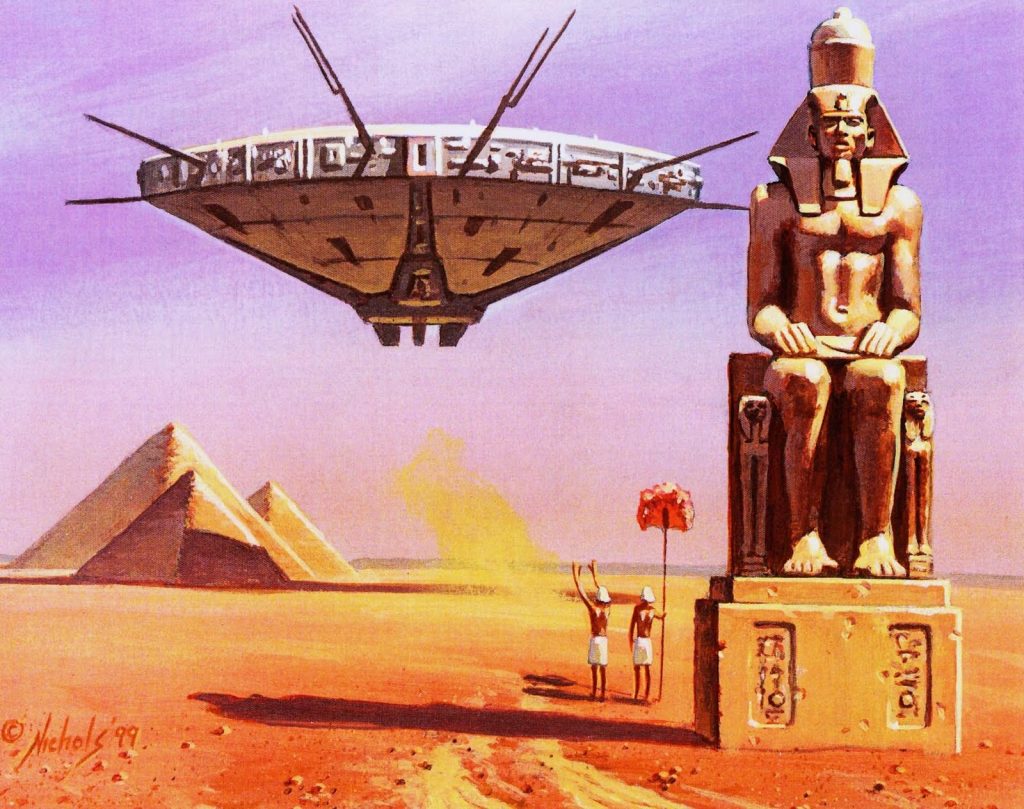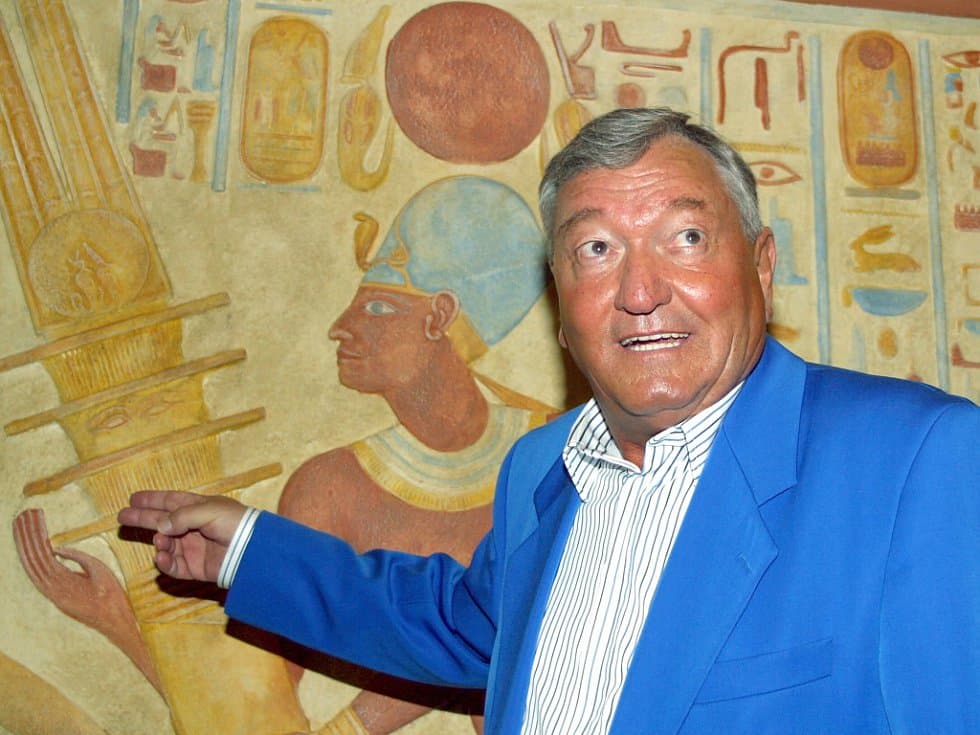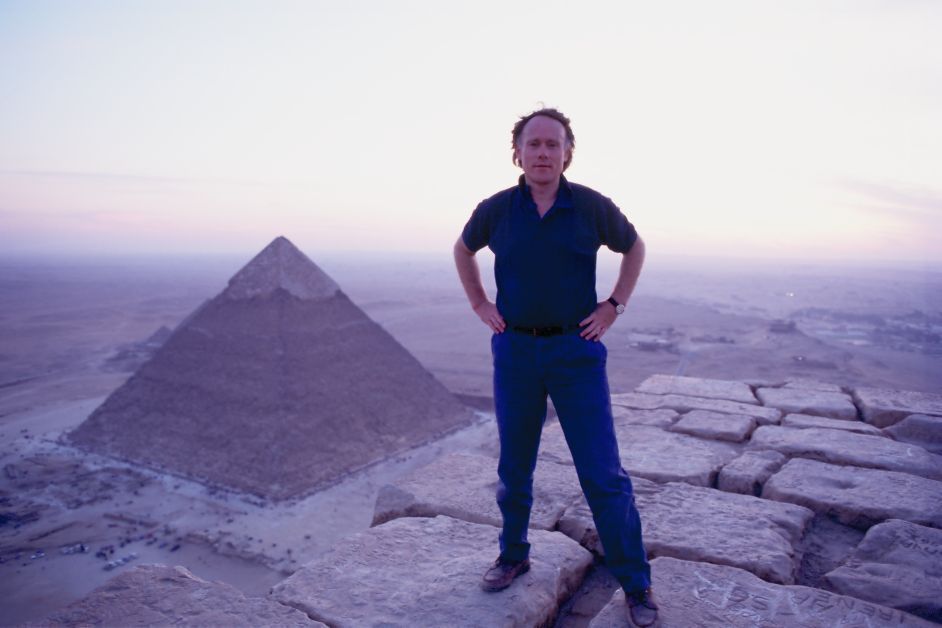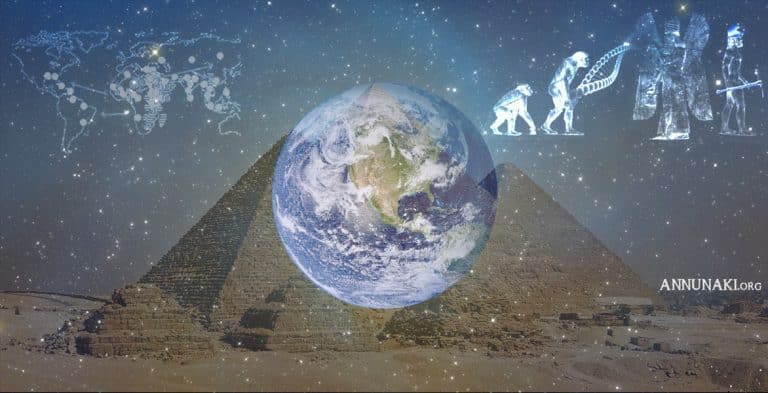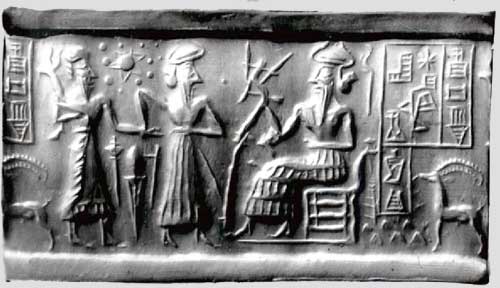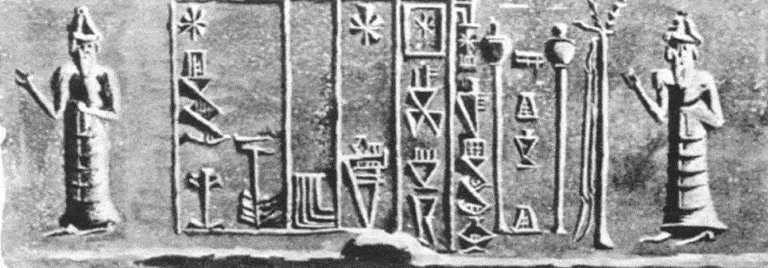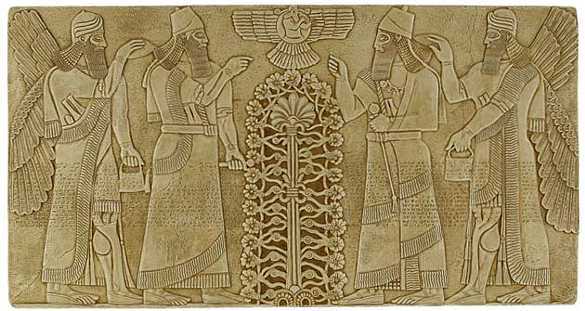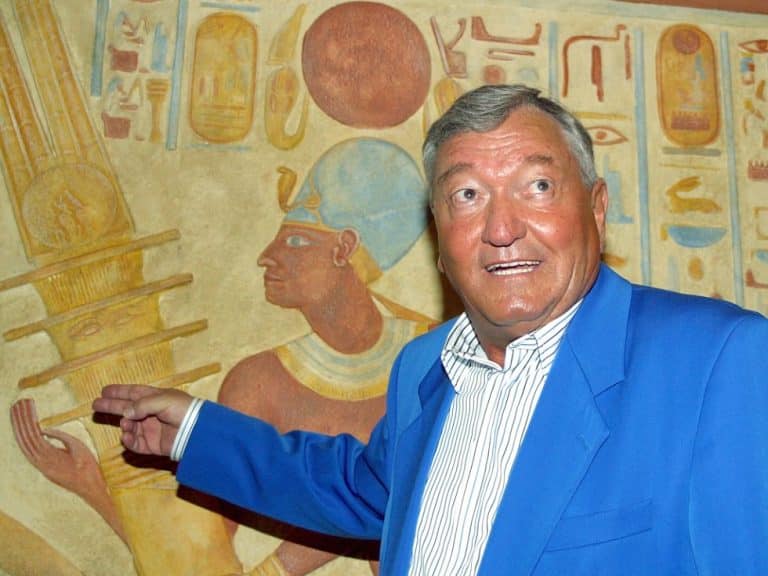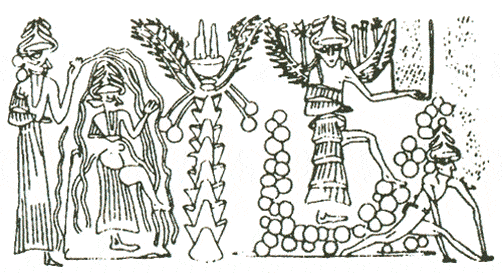Pseudoarchaeology 101
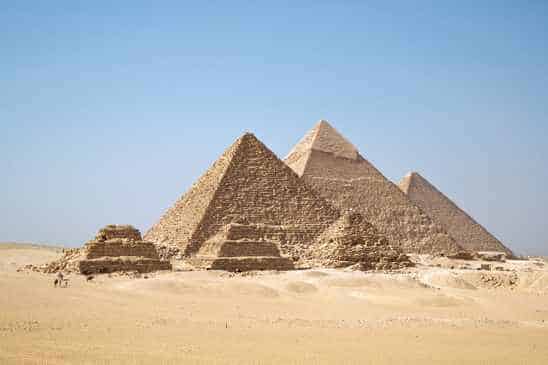
If you have ever mentioned the Anunnaki theory to a layman without a personal interest in the topic, there is a chance they shrugged it off and said something like, “That’s just pseudoarchaeology.”
In fact, you might’ve gotten the same response if you so much as brought up the mystery of pyramid construction in ancient Egypt, or any other unsolved mystery of the ages.
If you then looked up “pseudoarchaeology,” there is a good chance you stumbled into some other interesting theories. But there is no denying that the word “pseudoarchaeology” is pretty insulting.
What exactly is pseudoarchaeology, and who decides what falls into that category versus “archaeology?”
Who are some of pseudoarchaeology’s key figures, and what are some of the field’s key theories? In this article, we’ll explore this topic in depth.
What is Pseudoarchaeology?
What “pseudoarchaeology” is depends on who you ask. There are probably two different definitions we could give from two different perspectives.
Most academics define “pseudoarchaeology” according to methodology. Specifically, any claim about the past which is made by assembling questionable evidence in a questionable way is pseudoarchaeology, not true archaeology. Indeed, some pseudoarchaeologists have set out to try and “prove” their own beliefs, often religious or nationalist in nature.
But there are certainly patterns of dismissal on a topical level from academics concerning theories about the past. We could also define ” pseudoarchaeology” as any claim which challenges a mainstream archaeological perspective to the point where it may not be taken seriously to begin with.
Basically, if you mention “aliens” in any context … it’s “pseudoarchaeology.” If you mention any notion of “gods” walking on earth in any form, it’s usually termed the same. If you approach the field with any sort of mysticism as part of the framework of your own beliefs … it’s “pseudoarchaeology” again.
Criticisms of faulty methodology used by some “pseudoarchaeologists” certainly are justified in many cases.
But is that a cause to dismiss the entire field outright, ignoring possibilities about the past simply because they fall outside of our current sphere of knowledge and beliefs?
It is true that the field has been plagued by fabrications and frauds. But it is equally true that the vast majority of mainstream archaeologists will never seriously consider any theory involving ancient astronauts or other possibilities they find uncomfortable. Ask yourself if that prejudicial attitude sounds scientific.
Key Pseudoarchaeology Topics and Researchers
Now that we have discussed the basics of pseudoarchaeology, but take a look at some of the key topics, researchers and books which have brought this field to public attention.
Erich von Däniken
Perhaps the most iconic figure in the field of pseudoarchaeology is Erich von Däniken. This Swiss author is famous for writing the 1968 bestseller titled Chariots of the Gods?
Von Däniken led a colourful life, struggling to finance the trips he needed to take to conduct research for his work. Publishers didn’t expect his book to do anything (he was rejected by more than one), and were surprised when it became a massive success.
Von Däniken’s theories stirred the public’s imagination, asserting that famous archaeological sites such as the pyramids in Egypt and Stonehenge along with various artifacts are evidence of alien intervention in Earth’s history. He purports that the technology which appears to have been present in ancient civilizations had to come from elsewhere, as the know-how simply didn’t exist on Earth.
He provided further evidence for his claims in the form of Biblical references and artwork from ancient peoples which could be seen as portraying extraterrestrial beings and their crafts.
The theories of Von Däniken have received widespread criticism—and Von Däniken himself has admitted to fabricating elements of his stories. Nonetheless, he played an important role in bringing the theory of ancient astronauts into the limelight—and his books have helped to open many minds around the world to a broader field of possibilities concerning our past.
Graham Hancock
Alongside Von Däniken, perhaps the biggest name in the field of pseudoarchaeology is Graham Hancock. Starting out as a British journalist writing for major publications such as The Guardian and The Economist, he has penned a number of pseudoarchaeology books such as Fingerprints of the Gods, The Sign and the Seal, and Keeper of Genesis.
Hancock became particularly famous for his assertion that the three main pyramids at Giza were laid out to correlate with the stars in Orion’s Belt. Over this, he got into a war with the Horizon TV series on BBC Two, which escalated to complaints by Hancock to the Broadcasting Standards Commission—which did end up upholding one of his complaints against the TV program.
What Are Some Other Major Areas of Focus for Pseudoarchaeology?
Along with ancient astronauts like the Anunnaki and theories concerning the pyramids in Egypt, some other topics which pseudoarchaeologists have focused on include:
- Atlantis
- The Biblical Flood
- Stonehenge
- Other ancient sites and artifacts
- Mayanism and 2012
- Hyperdiffusionism
- Noah’s Ark
- Assorted racially-motivated theories
- Assorted nationalistically-motivated theories
- … And many other topics besides
Pseudoarchaeology Has Made Some Impressive Strides
Considering that pseudoarchaeology has been used to try and push nationalist, racist and religious agendas, it is easy to understand why it has received so much criticism (see the next section). But some researchers who have been considered to be “pseudoarchaeologists” by their mainstream counterparts have contributed substantially to the field of archaeology.
Indeed, archaeologist Cornelius Holtorf wrote about this in his journal article, “Beyond crusades: how (not) to engage with alternative archaeologies.” In particular, he focused on how at one point of time, theories of archaeoastronomy were considered widely to be pseudoarchaeology, but now, it is a serious field of mainstream archaeological research.
Holtorf also pointed out that over the centuries, some of the most important archaeologists in history could have been considered pseudoarchaeologists had they been subjected to today’s criticisms.
Here are some examples:
- William Stukeley: This famous scholar lived during the 17th and 18th centuries, and was a deeply religious man. That religious fervor played a role in his archaeological theories, as did his British nationalism. Yet he also played a key role in bringing attention to important sites such as Stonehenge Cursus and Stonehenge Avenue. He was influential among both archaeologists and thinkers in other fields both during his time and over the long centuries since his death.
- Margaret Murray: This archaeologist, who lived during the 19th and 20th centuries, was the UK’s first-ever female archaeology lecturer. Particularly following her death, her witch cult theories were debunked, which led to many people neglect her other archaeological work, especially in Egyptology. Nevertheless, she was a huge contributor to the field during her time, and left a lasting legacy behind her.
- Marija Gimbutas: This famous archaeologist and anthropologist lived from 1921 to 1994. Her feminist theories involving ancient goddesses and matriarchal societies have been criticized as pseudoarchaeology, but she too has had a lasting impact on both her own field and others.
It is worth noting that there are other unusual stories from the field of archaeology as well, some of which are quite extraordinary.
Take, for example, the 2012 discovery of the remains of King Richard III. As described in the linked article from The Guardian, historian Philippa Langley was searching for the location of his burial in Leicester (based on historical records), when she stumbled on a car park which gave her an uncanny sense.
As she described:
“When you’re writing a screenplay, you walk 1,000 miles in their shoes every day. I wasn’t interested in Richard’s death, I was interested in his life, but finally I thought I should go to Leicester – and the first time I stood in that car park, the strangest feeling just washed over me. I thought: ‘I am standing on Richard’s grave.’”
Langley decided to act on her mysterious feeling. She led the effort to dig at the car park, and sure enough, Richard III’s long-lost remains were finally unearthed.
A “feeling” surely is not much of a scientific rationale for digging at a site.
But Langley’s discovery was momentous. And we can say all day long, “it was a coincidence.” But that makes her discovery no less real, and her story no less valid. Calling her a “pseudoarchaeologist” for going with her gut would be quite ridiculous—and an offense to a beautiful moment where the past seemed to literally reach out and speak to the present.
Why Does Pseudoarchaeology Take So Much Flak?
Considering that there have been reputable “pseudoarchaeologists” who made recognized contributions in their fields, why do so many people look down on the field?
Well, we can come up with some good reasons and some bad ones.
Here are some valid criticisms of pseudoarchaeology:
- Questionable methods and outright fabrications. Considering that some pseudoarchaeologists have admitted outright to lying in their works, they should be held accountable for it. It is also bad science to make thin connections to support a theory while completely discounting all evidence to the contrary. Sadly, these are common practices.
- Theories motivated by racist, nationalist, or religious agendas. Quite a few pseudoarchaeologists throughout history have started with racist, nationalist or religious premises, and then set about “proving” their views by constructing dubious archaeological theories. The most prominent example of this was probably the Thule Society of Nazi occultists.
Here are some less valid motives for dismissing pseudoarchaeology:
- Sexism. If you read up on Margaret Murray and Marija Gimbutas, it is easy to see how patriarchal world views were less than compatible with these women’s achievements and theories. While that doesn’t necessarily validate those theories, it does remind us that unfounded prejudices can come from the mainstream as well, tainting their own studies of archaeology.
- Materialist prejudices. While we live in an era during which many people claim to be religious, the day-to-day attitudes and beliefs which we see demonstrated are profoundly materialistic in substance. This outlook informs the way that we analyze the methods used by archaeologists and “pseudoarchaeologists.” Those in the mainstream judge those methods according to their own sets of beliefs.
- General cynicism. Finally, accompanying that widespread materialist worldview is an attitude of general cynicism. Many people in today’s world have a hard time suspending disbelief, even in the face of actual evidence of the extraordinary. Ironically, such an attitude is quite unscientific.
Take Langley’s discovery of King Richard III’s burial site again. Imagine for a moment she had not found his remains. Most people would have laughed outright at her belief-driven methods.
But on the strength of her feeling, she did find his remains. Materialists and cynics would call this a coincidence, but was it? The simplest explanation would seem to be that she and Richard III really do share some connection across the ages, and that his remains called out to her from beneath the car park.
In short, the simplest explanation is that we don’t know everything about the past or the present, and there are many mysteries in our universe.
Quite a few articles regarding the discovery of King Richard III’s remains make no mention of Langley’s own extraordinary story—and no wonder. It is easier for mainstream archaeologists (and scientists altogether) to blow off such a miracle if they don’t even acknowledge it happened.
On the bright side, at least this has spared Langley from actually being called a pseudoarchaeologist (along with the fact that the “pseudo” here would wholly concern her reasons for digging, and not any unusual theories about the past).
How Should Pseudoarchaeology Be Approached Going Forward?
Based on everything we discussed, what conclusions can we draw, and what recommendations can we make for the future of pseudoarchaeology?
- It is important for any person investigating any archaeological possibility to set out with their motive being first and foremost the truth.
- When searching for the truth, we should check our prejudices at the door (or better yet, question them).
- We should gather evidence not just for a claim, but against it, examining counter-arguments.
- We should apply rational critical thinking skills at all times, and continuously monitor and question our own assumptions.
- Before believing a claim by another archaeologist, we should research it ourselves. In other words, we shouldn’t just take someone’s word for it that something is true. We should conduct our own investigation of all the existing evidence.
- We should not ignore extraordinary events when they occur, nor extraordinary possibilities, simply because they are extraordinary. We should approach them with open minds and learn to set aside our cynicism.
I would like to conclude with a quote from Holtorf’s article which I linked previously. While urging mainstream archaeologists and “pseudoarchaeologists” to work together, he said:
“Critical understanding and dialogue, not dismissive polemics, is the appropriate way to engage with the multiple pasts and alternative archaeologies in contemporary society. That would take nothing away from professional archaeology as it exists and create added value … The true danger does not lie in the epistemological relativism inherent in my proposition but in the indefensible absolutism that is the alternative.”
Let’s hope that mainstream archaeologists take that advice, and learn to start working with those whose views they summarily dismiss today because of their own prejudices.
At their worst, both mainstream and alternative archaeology fall back on prejudices, committing the mistakes which drive human beings apart.
The reality is that pseudoarchaeology is gaining in popularity around the globe today because in a cynical age, people are looking for hope and possibility—for the extraordinary made manifest.
At their best, both mainstream and alternative archaeology can offer that. By turning away from their prejudices, archaeologists with diverse backgrounds and beliefs can bring humanity together, uniting in the search for the deeper truth about ourselves and our universe.

